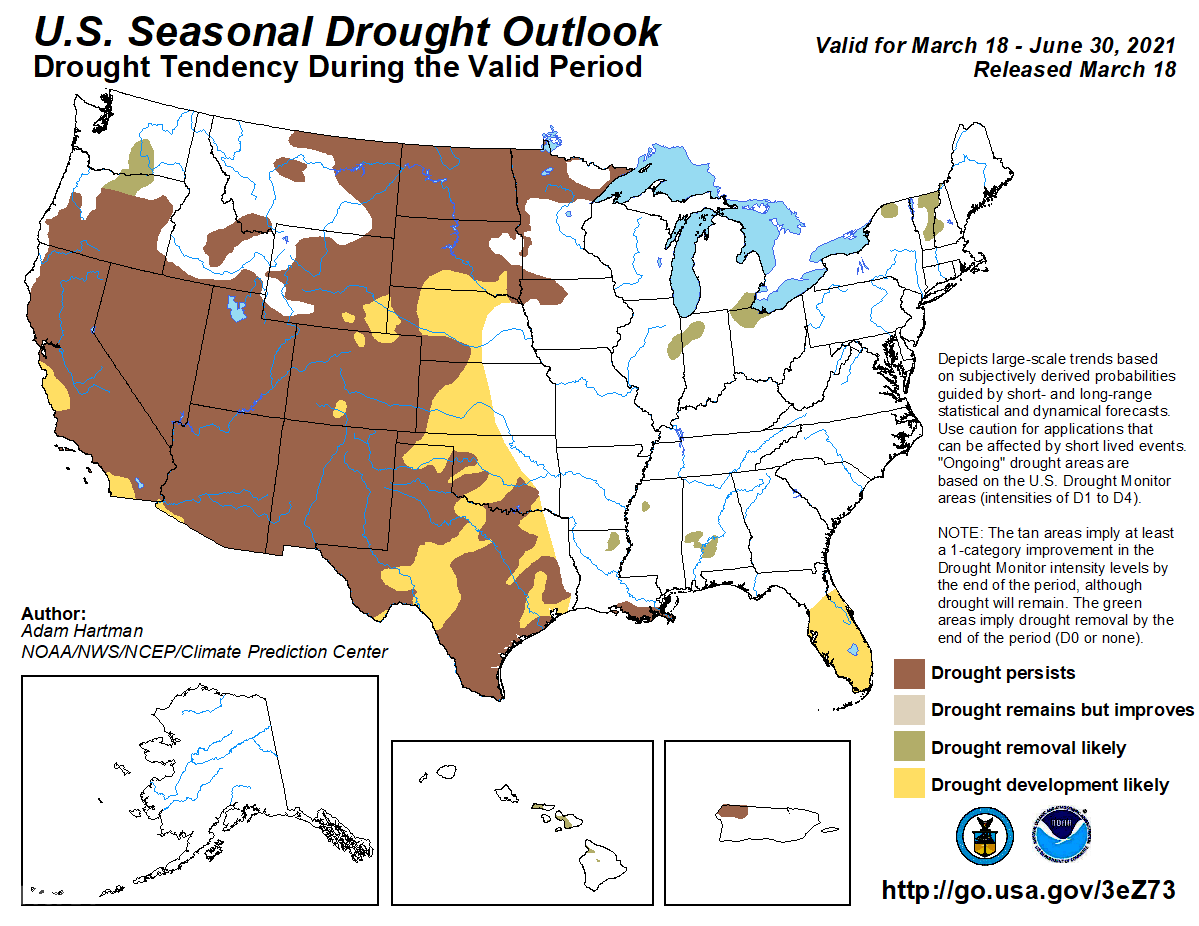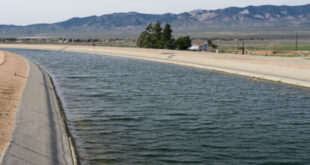Same tune, different year. After a dry winter season and a lower than average snowpack, California looks like its headed back into a drought cycle.
And it’s not the only state experiencing dry conditions, nearly one-half of the country — stretching from the Pacific Coast to the Great Plains and upper Midwest — is currently experiencing moderate to exceptional drought according to the National Oceanic and Atmospheric Administration (NOAA).
In the Spring Outlook released by NOAA this week, drier conditions in the Southwest U.S. associated with La Niña and the failed 2020 summer monsoon have been contributing factors to the development and intensification of what represents the most significant U.S. spring drought since 2013, which will impact approximately 74 million people.
“The Southwest U.S., which is already experiencing widespread severe to exceptional drought, will remain the hardest hit region in the U.S., and water supply will continue to be a concern this spring in these drought-affected areas,” said Mary Erickson, deputy director of the National Weather Service. “This is a major change from recent years where millions were impacted by severe flooding. Nonetheless, NOAA’s forecasts and outlooks will continue to serve as a resource for emergency managers and community decision-makers as they navigate all potential extreme seasonal weather and water events.”
 NOAA is predicting that warmer-than-average temperatures this spring and low soil moisture will allow drought conditions to develop and expand.
NOAA is predicting that warmer-than-average temperatures this spring and low soil moisture will allow drought conditions to develop and expand.
“Our national hydrologic assessment helps to inform the Nation where there will likely be too much or too little water. This spring, we anticipate a reduced risk for flooding, and forecast significantly below average water supply where impacts due to low flow contribute to the continued drought,” said Ed Clark, director of NOAA’s National Water Center in Tuscaloosa, Alabama.
NOAA produces seasonal outlooks to help communities prepare for weather and environmental conditions that are likely during the coming months to minimize impacts on lives and livelihoods.
Video and images for the 2021 Spring Outlook are available at climate.gov/Spring2021
 California Water News Daily Your Source For Water News in California
California Water News Daily Your Source For Water News in California


